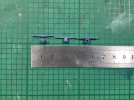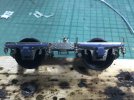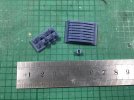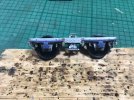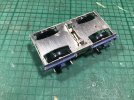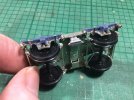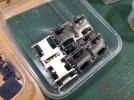simond
Western Thunderer
Thanks Dave, I’d have done the same,
indeed, at work, I try to ensure that groups of parts and assemblies contain a word that doesn’t appear elsewhere - our latest instruments are the “Pro 2” series, and it makes searching the parts database so much easier. Combining it with the “group code” (eg “machined parts”) saves a bit of time.
Happily, in this case, I did use a suitably rare word, and spelled it correctly!
The trouble starts when there’s more than one logical answer. In this case the commode handle tool was not in the drawer marked “jigs”, but appeared in the cigar tin marked coaches…. It’s going back in the right drawer!
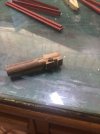
the tail of the bent wire is inserted in the hole, the wire is pulled tautly around the “carefully machined former” (AKA the sticky-outy-lump) and then bent sharply down into the slot using thin-nose pliers to make the corner tight.
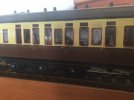
it does appear that the middle one is not quite as nice as the far one, but from a coach-length away, you’d be hard pressed to tell.
atb
Simon
indeed, at work, I try to ensure that groups of parts and assemblies contain a word that doesn’t appear elsewhere - our latest instruments are the “Pro 2” series, and it makes searching the parts database so much easier. Combining it with the “group code” (eg “machined parts”) saves a bit of time.
Happily, in this case, I did use a suitably rare word, and spelled it correctly!
The trouble starts when there’s more than one logical answer. In this case the commode handle tool was not in the drawer marked “jigs”, but appeared in the cigar tin marked coaches…. It’s going back in the right drawer!

the tail of the bent wire is inserted in the hole, the wire is pulled tautly around the “carefully machined former” (AKA the sticky-outy-lump) and then bent sharply down into the slot using thin-nose pliers to make the corner tight.

it does appear that the middle one is not quite as nice as the far one, but from a coach-length away, you’d be hard pressed to tell.
atb
Simon



